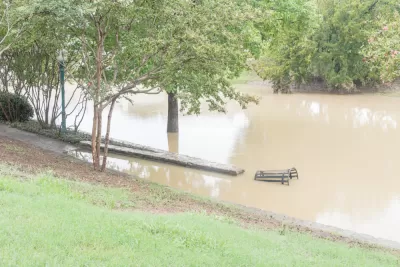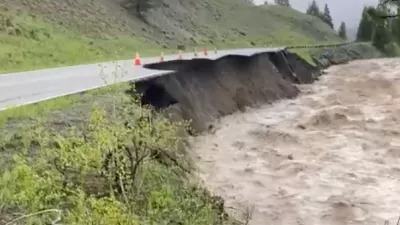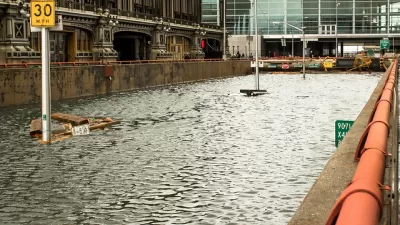Fort Worth could spend $136 million on stormwater infrastructure and flood control over the next five years. In all, the city needs more like $1 billion of investment.

The city of Fort Worth stormwater management program is proposing an $8 million increase in flood control spending over the next five years, a total of $136 million for the city’s storm drains, erosion control, and flood maps, according to a paywalled article by Harrison Mantas for the Fort Worth Star-Telegram.
The big capital investment is still far less than the city needs to address flooding, according to the city’s own analysis. “The city estimated in 2020 it would cost $1 billion to fix 300 of Fort Worth’s most flood-prone areas. In 2020, the city added 35 cents to the stormwater fee to fix 80 of the worst spots,” writes Mantas.
Central to the increase spending on flood control are new flood control maps, under development by the city, which “could be used to guide future zoning decisions and help homeowners better protect themselves against flood risk,” according to the article. “The city has released initial maps that indicate areas where flash flooding is the worst. Those include the Cultural District, Meadowbrook in east Fort Worth, and the intersection of Cleburne Road and West Berry Street."
FULL STORY: Fort Worth’s flood problems are a billion-dollar fix. The city is spending $136 million

Study: Maui’s Plan to Convert Vacation Rentals to Long-Term Housing Could Cause Nearly $1 Billion Economic Loss
The plan would reduce visitor accommodation by 25,% resulting in 1,900 jobs lost.

North Texas Transit Leaders Tout Benefits of TOD for Growing Region
At a summit focused on transit-oriented development, policymakers discussed how North Texas’ expanded light rail system can serve as a tool for economic growth.

Why Should We Subsidize Public Transportation?
Many public transit agencies face financial stress due to rising costs, declining fare revenue, and declining subsidies. Transit advocates must provide a strong business case for increasing public transit funding.

How to Make US Trains Faster
Changes to boarding platforms and a switch to electric trains could improve U.S. passenger rail service without the added cost of high-speed rail.

Columbia’s Revitalized ‘Loop’ Is a Hub for Local Entrepreneurs
A focus on small businesses is helping a commercial corridor in Columbia, Missouri thrive.

Invasive Insect Threatens Minnesota’s Ash Forests
The Emerald Ash Borer is a rapidly spreading invasive pest threatening Minnesota’s ash trees, and homeowners are encouraged to plant diverse replacement species, avoid moving ash firewood, and monitor for signs of infestation.
Urban Design for Planners 1: Software Tools
This six-course series explores essential urban design concepts using open source software and equips planners with the tools they need to participate fully in the urban design process.
Planning for Universal Design
Learn the tools for implementing Universal Design in planning regulations.
Ascent Environmental
Borough of Carlisle
Institute for Housing and Urban Development Studies (IHS)
City of Grandview
Harvard GSD Executive Education
Toledo-Lucas County Plan Commissions
Salt Lake City
NYU Wagner Graduate School of Public Service





























